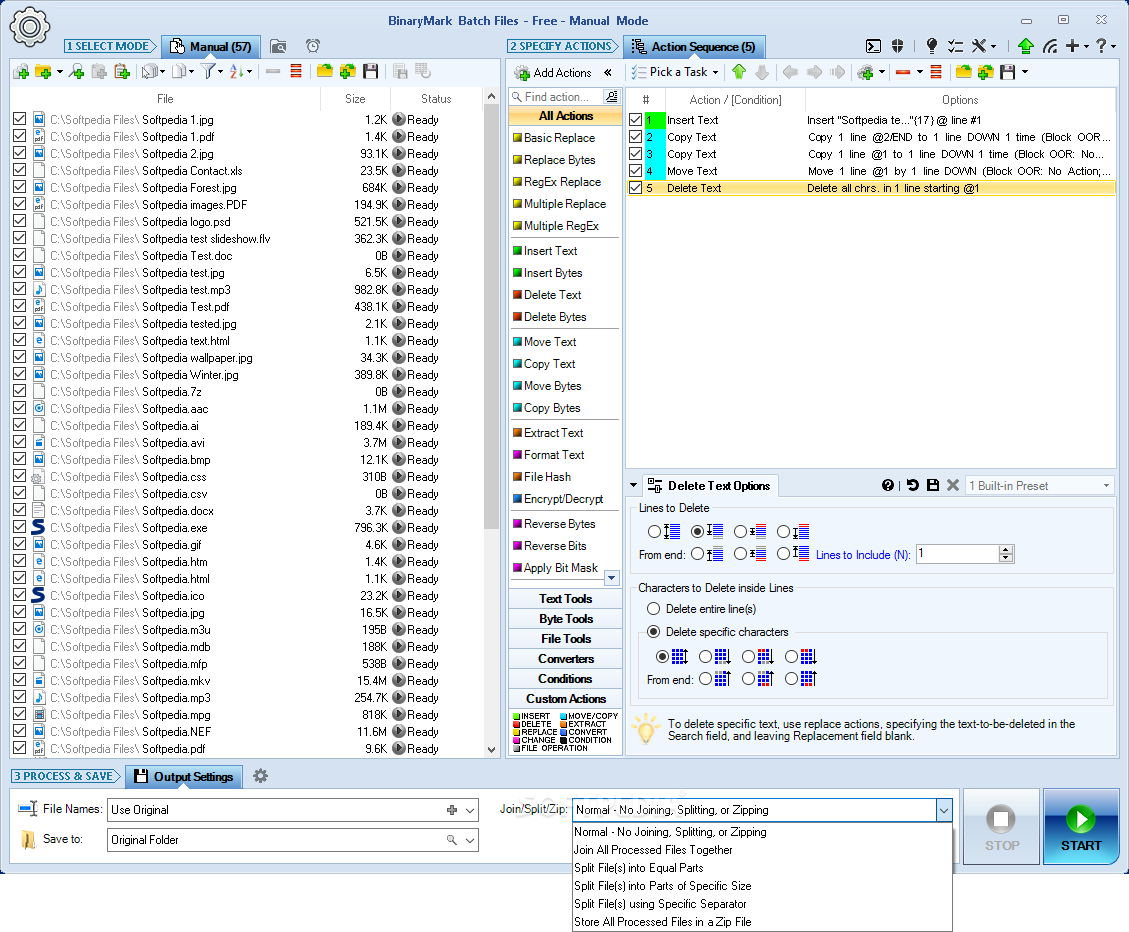So, this is how the function is called in batch files. In the case of batch file functions with parameters, a tilde sign is used to access them in the main program along with the positional number of parameter. Batch scripts support the concept of command line arguments wherein arguments can be passed to the batch file when invoked. The arguments can be called from the batch files through the variables%1,%2,%3, and so on. The following example shows a batch file which accepts 3 command line arguments and echo's them to the command line screen. Batch files for DOS, OS/2, Windows 95/98, NT 4, 2000 and XP Technically, DOS provides just eight basic batch file commands — CALL, ECHO, FOR, GOTO, IF, PAUSE, REM, and SHIFT — plus a tiny assortment of miscellaneous doodads: replaceable parameters, environment variables, labels, double signs, and @ signs. Cool Batch Files: OK, I'm going to assume that you already have batch experience and don't need me to explain every command and every symbol and every thing that is typed. So here we have four different batch files. If you have no experience with batching, I suggest.
A batch file is an unformatted text file or script file which contains multiple commands to achieve a certain task. It contains series of command that is executed by command line interpreter. Extensions.bat or.cmd The instructions in batch files are for automating repetitive command sequences.
To edit a batch file, follow the steps below for where you want to edit the file.

Edit a batch file from within Windows
Batch files are plain-text files, which means they can be edited as a text file by right-clicking the file and clicking Edit as shown in the picture.
Once you've clicked edit, your default text editor opens the file and allows it to be modified.
You can also open any text editor or word processor and from within that program open the batch file.
After making all changes save and exit the file. If you are asked how to save the file, make sure it is saved with a .batfile extension.
TipFor information about the available command, see: What commands are available in a batch file?
Edit a bat file in a Command Prompt (DOS)
To edit a batch file in MS-DOS, follow the steps below.
NoteNew versions of Windows or computers running a 64-bit version of Windows no longer support the edit command, which means these steps no longer work. Use the above steps if you are running the latest version of Windows. For help with determining your version of Windows, see: How to determine if you have a 32-bit or 64-bit CPU.
- In the MS-DOS prompt, type: edit test.bat and then press Enter.
- If typed correctly, you'll see a blue edit screen. In the screen, type:
- After entering these lines, click File and choose exit; when prompted to save, click Yes. Users who do not have a mouse can accomplish this same task by pressing Alt+F to access the file menu, and then X to exit. Press Enter to save changes.
- Once you are back at the MS-DOS prompt, type: test and press Enter to execute the test.bat file.
If you want to add more lines to this batch file, type edit test.bat to open the file for editing.
Additional information about the MS-DOS edit command is in our edit command page. Some versions of MS-DOS and bootable diskettes may not have the edit command. If this the case, you would either need to obtain the edit.com file or use the copy con command.
TipFor information about the available command, see: What commands are available in a batch file?
Additional information
To run a batch file, follow the steps below for where you want to run the batch file.
Batch Files Examples
Running a batch file from within Windows
A batch file runs like any other executable file by double-clicking the file within Windows. However, because a batch file runs in a command line, it immediately exits when done, so you may only see a black box for a second.
TipBatch File To Open File
If the batch file is closing too fast, or you want to read the output, you can edit the batch file. Add a pause command to the end of the file at the beginning of a new line. The pause command waits for user input before continuing.
Run a batch file from the Command Prompt
To run a batch file, move to the directory containing the file and type the name of the batch file. For example, if the batch file is named 'hope.bat,' you'd type 'hope' to execute the batch file.
